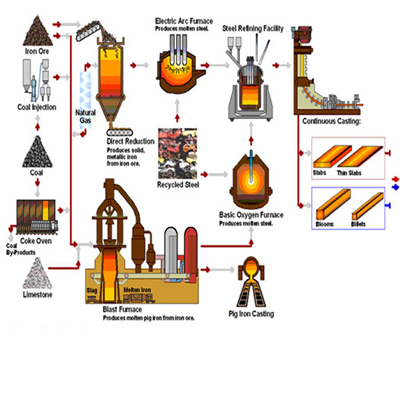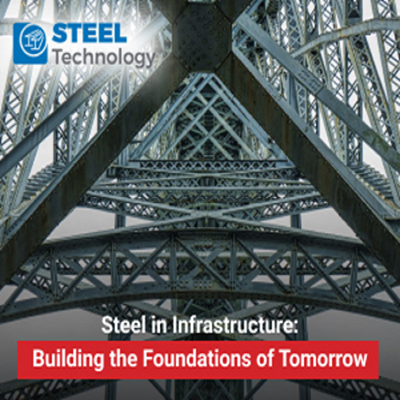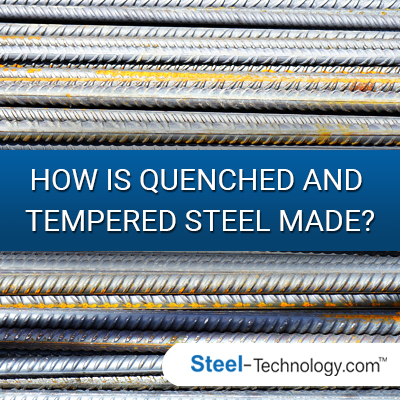Forging Ahead: The Art and Science of Steel Rolling

Steel rolling is a critical process in the manufacturing of steel products, playing a pivotal role in various industries such as automotive, construction, aerospace, and infrastructure development. This article delves into the art and science of steel rolling, exploring its techniques, advancements, challenges, and prospects.
Introduction to Steel Rolling
Steel rolling is a metalworking process that involves shaping metal by passing it through pairs of rolls to reduce thickness and alter the cross-sectional area. The primary goal of steel rolling is to produce finished products with desired dimensions, surface finish, and mechanical properties. The process is widely used in the production of sheets, plates, bars, and structural components.
I. Historical Evolution of Steel Rolling
The history of steel rolling dates back to ancient times when metalworkers used manual methods to shape metal. However, significant advancements occurred during the Industrial Revolution, leading to the development of mechanized rolling mills. In the 19th and 20th centuries, innovations such as hot rolling, cold rolling, and continuous rolling revolutionized the steel industry, enabling mass production of high-quality steel products.
| Also Read: Rolling Into Precision: Innovations in the Steel Industry |
II. Types of Steel Rolling Processes
Hot Rolling: Hot rolling involves heating the steel billets or ingots above their recrystallization temperature and then passing them through rolling mills to achieve the desired shape and dimensions. This process is ideal for producing structural steel components, seamless tubes, and large-diameter pipes.
Cold Rolling: Cold rolling is performed at room temperature, where the steel is passed through rollers to achieve precise thickness, surface finish, and mechanical properties. Cold-rolled steel is used in applications requiring tight tolerances, such as automotive body panels, appliances, and electronic components.
Continuous Rolling: Continuous rolling is a continuous and automated process that eliminates the need for frequent stops and starts. It is highly efficient for producing long steel products like rods, rails, and beams.
III. Advancements in Steel Rolling Technology
Automation and Robotics: Modern steel rolling mills are equipped with advanced automation and robotics systems that optimize production processes, improve accuracy, and enhance safety. Automated controls monitor parameters such as temperature, pressure, and speed to ensure consistent product quality.
Computer-Aided Design (CAD) and Simulation: CAD software allows engineers to design complex rolling processes, simulate material flow, and optimize roll pass designs for maximum efficiency and product quality. Simulation tools also aid in predicting and mitigating defects during rolling.
Rolling Mill Equipment: The development of high-performance rolling mill equipment, including roll stands, guides, and cooling systems, has significantly increased productivity and product quality. Enhanced roll materials and coatings improve wear resistance and prolong service life.
Digitalization and Data Analytics: Integration of digital technologies such as Internet of Things (IoT) sensors, data analytics, and predictive maintenance systems enables real-time monitoring of equipment performance, predictive maintenance scheduling, and optimization of process parameters for improved efficiency and cost savings.
IV. Challenges in Steel Rolling
Despite technological advancements, steel rolling faces several challenges that require continuous innovation and problem-solving:
Material Quality Control: Maintaining consistent material properties, surface finish, and dimensional accuracy throughout the rolling process is essential but can be challenging, especially for high-strength steel and complex shapes.
Energy Consumption: Steel rolling consumes significant energy, especially in hot rolling processes where heating and reheating operations are energy-intensive. Sustainable practices and energy-efficient technologies are crucial for reducing environmental impact.
Defects and Quality Assurance: Defects such as surface imperfections, internal cracks, and dimensional variations can occur during rolling. Implementing advanced inspection techniques, defect detection systems, and quality assurance protocols is vital for delivering defect-free products.
Market Dynamics: Fluctuations in steel demand, market prices, and global competition pose challenges for steel manufacturers. Flexibility, agility, and strategic planning are necessary to adapt to market changes and maintain competitiveness.
V. Future Trends in Steel Rolling
Industry 4.0 Integration: The integration of Industry 4.0 technologies, including artificial intelligence, machine learning, and digital twins, will revolutionize steel rolling by enabling predictive maintenance, autonomous operation, and adaptive process control.
Advanced Materials: The development of advanced steel alloys with superior strength, corrosion resistance, and lightweight properties will drive innovation in steel rolling processes, requiring tailored rolling techniques and equipment.
Sustainability Initiatives: Steel manufacturers are increasingly focusing on sustainability initiatives such as recycling scrap steel, reducing carbon emissions, and implementing circular economy practices in the steel production and rolling processes.
Customization and Flexibility: Customer demands for customized steel products with specific properties and dimensions will drive the need for flexible and agile rolling processes capable of rapid changeovers and small-batch production.
Conclusion:
Steel rolling is a dynamic and evolving field that combines artistry, engineering expertise, and technological innovation to produce essential materials for various industries. As the demand for high-performance steel continues to grow, advancements in steel rolling technology, process optimization, and sustainability will shape the future of this critical industry. By addressing challenges and embracing emerging trends, steel manufacturers can forge ahead and maintain their competitive edge in the global market.











